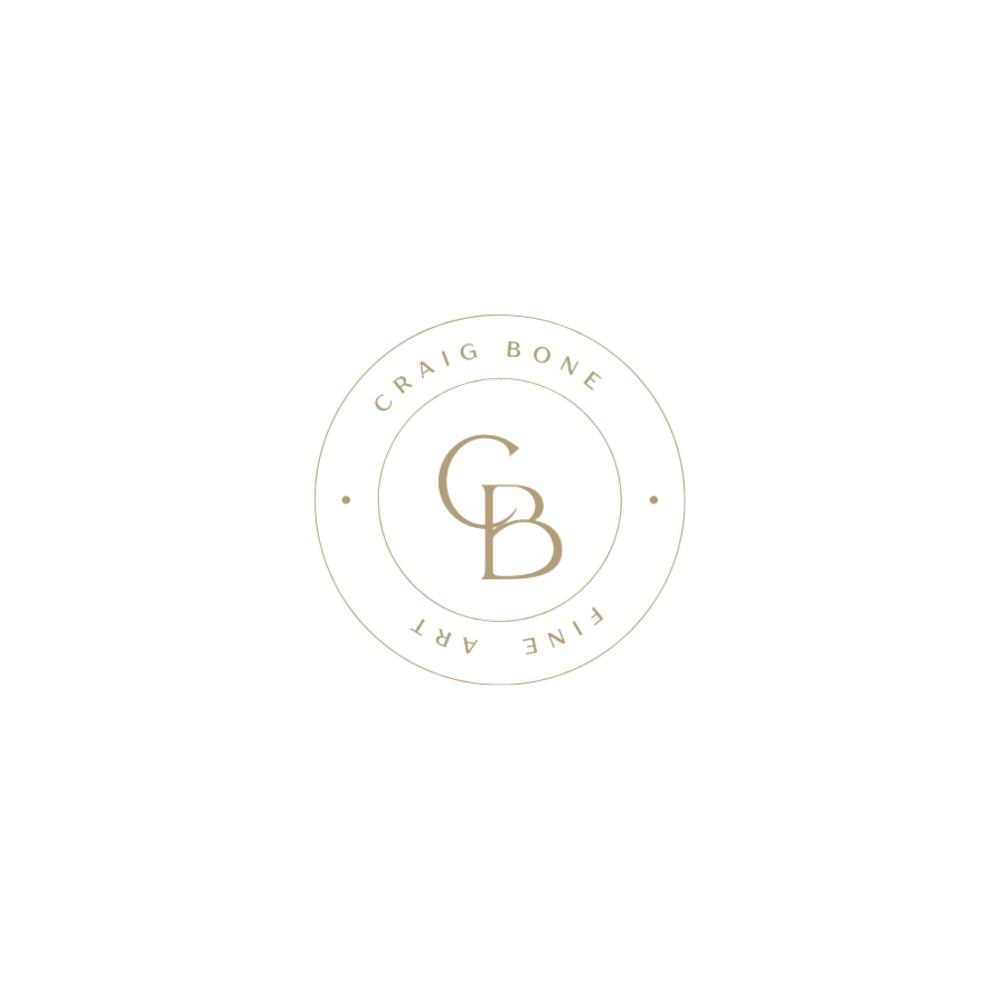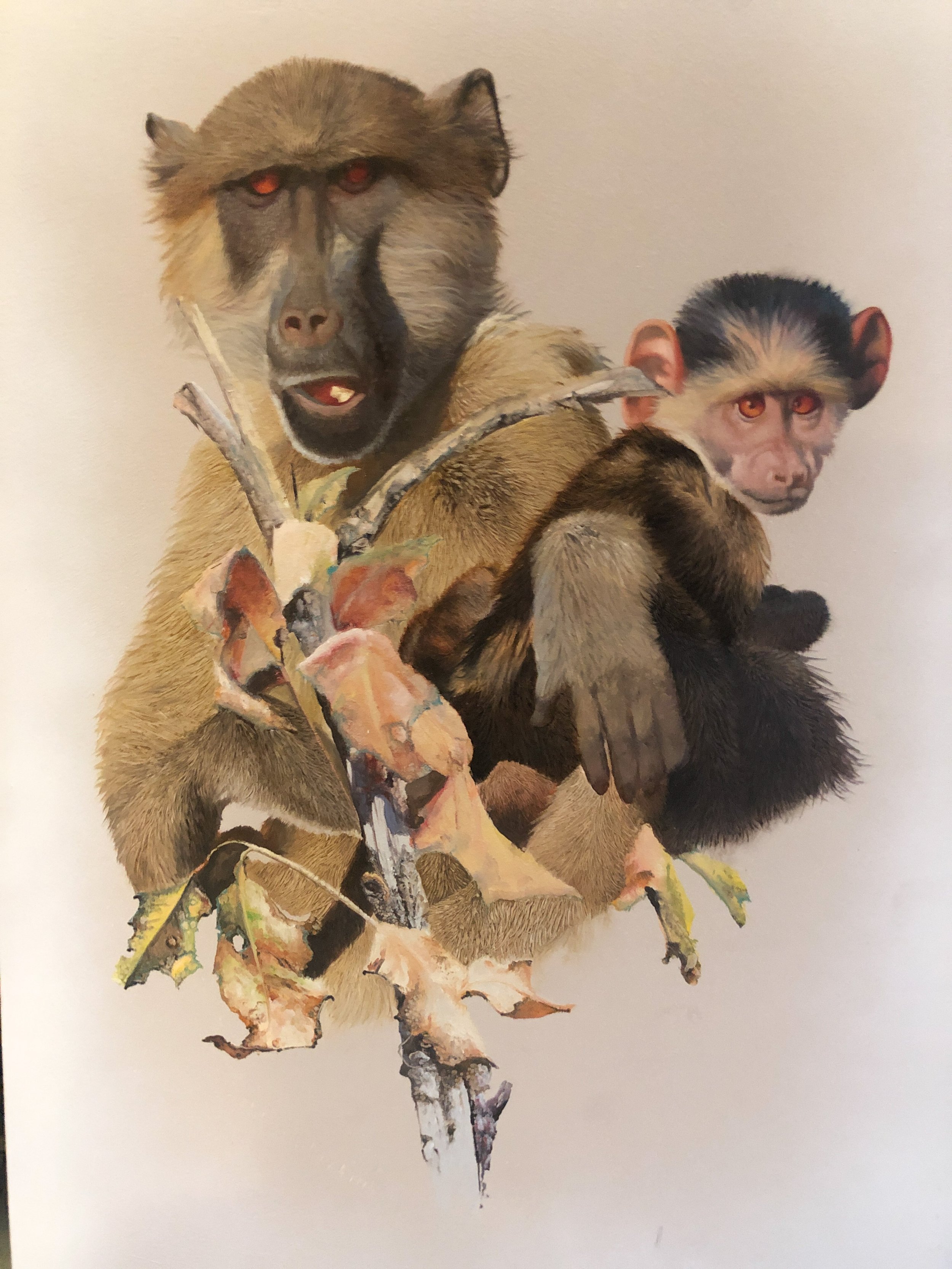Oil painting on board. Mana scene, busy painting the Acacia Albida trees together with the combretum ‘flame creeper’ that adds that pop of red color that everyone knows and loves so well.
#memories #home #zimbabwe #oilpainting #originalartist#curatedart #fineart #craigboneartist#museumart#societyofanimalartists #craigboneartist
The Painting Bones
Sharing this old article that I have stumbled across. I have been combing through all sorts of stuff since having my instagram hacked and rediscovering old gems here and there. (Follow @artist_craigbone for the new account.) Now if only I could remember the login and password to this blog from many many years ago.. Computer has changed since then and I have completely lost the info.
#rediscoveringart #craigboneartist #artist_craigbone
An African Artist’s Perspective
Painting our world a better hue
By Todd Wilkinson
Craig Bone is known for getting intense faraway looks in his eyes, the kind that make you wonder where daydreams take him. I know one of the spots that will forever live large in his mind. Half my adult life ago, I accompanied Bone to a wild corner of his native land, a place that ranks among Bone’s favorites on earth. Today, the essence of that remarkable African refuge, however, is, like many others, in imminent danger of being lost.
In the 1990s, we trekked on foot through Zimbabwe’s Mana Pools National Park amid bands of elephants, territorial lion prides, leopards prowling the night, resident Cape buffalo notorious for charging unsuspecting hikers, hippos moving like submarines through Mana’s potholes and crocodiles lining the Zambezi River.
Bone was in his element taking photographs and gathering research for another painting. There were no handrails girding the game trails we coursed, no fences to scramble safely behind, no game guards providing escort and no gun slung over Bone’s shoulders. Visitors are on their own in Mana, the way Bone likes it. He doesn’t believe in carrying weapons for self defense if the goal is getting by in the wilderness solely on one’s wits.
It’s this kind of attitude—meeting subjects on their terms—that is a brilliant yet little known hallmark of Craig Bone’s art. Few sporting artists command the mystique at SCI that he does. Consider his experiential pedigree: a combat veteran (he parachuted out of planes into African firefights during Rhodesia’s bush war); a wounded warrior; a man who sought out nature to heal from post-traumatic stress disorder; a Christian searching for deeper spiritual meaning; a painter; a conservationist, and because of circumstance, an expatriate. Bone is a Zimbabwean-American whose backstory must be heard to be believed.
Short of hearing him wax about his adventures, we as viewers can disappear into his wildlife revelries and re-creations of historic modern battlefield scenes intended to honor those who served in uniform—including Yanks who spent tours in Vietnam, Iraq and Afghanistan.
“I am now painting massive military murals and life-sized elephant paintings which I believe to be a metaphor of my life as an artist,” Craig says. Bone himself may on occasion evince the temperament of a gruff and skittish old rhino who has survived the years, but his paintings summon us. Vibrant and engaging, they push the drama and mood of realism far beyond what could be translated by a camera.
Some may remember that in the 1990s Bone’s painting “Year of the Leopard” set a fundraising record for fine art at SCI auction (the proceeds going to support SCI’s ongoing commitment of wildlife conservation) and in 2003 he was SCI’s wildlife artist of the year. Another work, a portrayal of the Vietnam War titled “Earth, Wind and Fire,” hung in the Pentagon. Among Bone’s legion of collectors was the late Army General “Stormin’” Norman Schwarzkopf, Jr., who made regular visits to the SCI convention.
Born in Salisbury, Rhodesia, now Harare, Zimbabwe, in 1955, Bone had a childhood in which nature was imprinted deep in his identity. He went to art school in South Africa and came home to serve with the legendary Rhodesia Light Infantry. He was severely injured in a mortar attack that nearly claimed both legs. After the bush war, Craig and wife Anne-Marie—former chairman of the Makonde Branch of the Wildlife Society— raised their son and daughters in a rural Zimbabwe town where the couple always believed they’d spend the rest of their days.
Those years, they say, were idyllic ones. Camping excursions, which doubled as research trips for paintings, played a centrifugal role in the family’s bonding. Bone was among a truly remarkable generation of Zimbabwean wildlife artists that rein among the best concentration of talent the continent has ever seen.
Then the troubles in Zimbabwe began to escalate. Turmoil associated with the government of Robert Mugabe left the Bone clan uprooted. They de-camped to the US yet art remains a potent touchstone in expressing their love for Africa.
For a few years now, Bone’s grown-up daughters, Lauren and Maxine, have been leaving their mark as talented wildlife artists, the result of their dad’s mentorship and following in his footsteps at SCI. Both Maxine and Lauren were born in Harare—in 1987 and 1989, respectively. The sisters today reside in the American West: Maxine at the foot of the Colorado Rockies in Longmont and Lauren near the Pacific Ocean in Seaside, California. When the threesome converges upon Bone’s booth at SCI, it’s a dynamic art event.
Over the past year, Maxine has completed a series of bird paintings. “For a long time I focused on larger oil paintings, but now I’m really excited about downsizing and focusing on an array of colorful African birds,” she says. “Last year I was working on a series of Zulu tribal oil paintings inspired by a trip to South Africa a couple of years ago. I have thousands of reference photos in my collection and certainly have no lack of inspiration. Painting tribal children has always been one of my favorite and definitely the hardest thing for me to paint, so I am always pushing my limits and taking on a more difficult piece than last time.”
The biggest lesson the sisters learned from their dad is that the path of being an artist isn’t an easy one and sometimes one doesn’t get immediately rewarded for hard work. But if paintings are true to the artist, then over time everything works out. And indeed it has. “Our dad never tried to push us into anything. He has made a living following his passion in life and expects the same from us,” Lauren says.
On family trips to Lake Kariba, they became avid birders. In excursions to Mana Pools, they would gather quietly, hidden behind blinds watching predators and prey pass by. Bone the art teacher told his daughters that they and their work matters. Their time together in the bush helped Bone heal from battle-related nightmares.
The lucky few who have original Craig Bones on their walls may not realize some of the works are value-added. When Lauren and Maxine were young, Bone invited them to take his palette and contribute small brushstrokes to pieces on his easel. “To any child that is a huge boost of confidence—here they were at such a young age adding their own brushstroke to one of their dad’s paintings,” Anne-Marie says. “I believed it instilled in them a sense of ‘Hey, I can do this too!’”
Praised for being among the brightest young wildlife artists of their generation, Lauren and Maxine credit their dad for dispensing tough love. “Some days he would walk into our studio and tell one of us to completely disregard days of work because the piece ‘just wasn’t working.’” Maxine says. “It was tough, but we certainly weren’t about to make that same mistake again. Today I can look back and appreciate that, because a few days lost is nothing compared to years heading down the wrong road.”
When Craig isn’t completing commissions, painting for the SCI show or sending works to Harte International Galleries in Hawaii—Lauren and Maxine also show there—he’s committed to helping out fellow vets. Living and volunteering at Camp Lejeune, North Carolina, Bone has hosted art workshops with wounded warriors, in particular Marines from Wounded Battalion East, teaching them how to paint as a form of therapy and self expression. At Fort Bragg, he helped pioneer a program called “Art from the Heart.”
“Painting and illustrating is not a 9 to 5 job to him; he doesn’t take weekends. He lives and breathes art,” Anne-Marie says, noting that Bone is still on journey. “He gets excited when he discovers a different method or new technique. The fact that he continues to challenge his own beliefs about art and his approach to painting is what keeps him relevant as an artist today.” And it’s why his art is collected by people young and old.
After witnessing carnage of humans and wildlife in the bush war, he committed himself to conservation. He’s part of a new war fighting to hold the line in protecting wild places. “Africa is not a disconnected continent separated from the rest of the world. It is fully integrated into the global economy,” Bone says. “Because of this, the problem of poaching is ever complicated–local poachers are paid by foreign financiers and enabled by corruption at all levels of government to supply an illegal market often driven by superstitious beliefs in the powers of animal parts.”
The poaching pandemic is rampant, but fortunately so are global efforts to combat it, Bone says. He is proud to support SCI, which is working hard to not only plug the pipeline of illegal trade in animal parts but also get money to the ground, making local people stakeholders in safeguarding imperiled wildlife. “Countries like China have initiated educational programs to correct misinformation and organizations like SCI are central to conservation efforts,” he says.
Years ago at SCI in Reno, I had a brief chat with General Schwarzkopf about his own love for wildlife art. He told me that he had admiration for Bone because he could understand how the painter’s forays into nature—and the visions that emerged from them— could help anyone escape from the trauma of battle, be it in war or the hectic pace of modern life. “I admire Craig Bone and I appreciate his work,” Schwarzkopf said, “because it reminds us what, at the end of the day, we want to protect for children and grandchildren. When you see a Craig Bone painting there are no words. You feel what he’s after where it counts— in your heart.”–Todd Wilkinson
May newsletter and discount code has just gone out subscribers. Are you on the newsletter list?
All my newsletter subscribers have just received a discount code in my May newsletter. If you would like to take the opportunity of getting that discount code please sign up.
The @craigboneartist hackers are still at it. Please don't fall for their latest attempt.
Hello, please don't fall for the latest attempt from my instagram hackers. They obviously were not able to convince any of you to buy their fake bitcoin so now they are attempting to hack your account by asking (begging) you to vote for me in some fake art competition. Please report!
I do appreciate all the followers who have not blocked these fools who continue to warn me of their efforts.
INSTAGRAM HACK
The @craigboneartist instagram has been hacked. Please do not respond to any messages from the account, and apparently they are selling bitcoin to “dear friends and family” REPORT THEM VIA THE THREE DOTS …
Nyala painting
Working on this peaceful scene today in the studio. Nyala, shy and elusive. A couple of dugga boys resting below in the muddy flood plain. Everyone relaxed and calm.
.
.
.
.
.
#realart #realartist #calm #zambezi #oddlysatisfying #originalartwork #realismo #realisticart #arterealista #painting #peinture #pintura #pittura #malerei #boyama #hyperrealism #artlovers #art_hunter #loveart #buffalo #Tragelaphus-angasii #nyala #zimbabwe #zambeziriver #africanwildlife #craigboneartist #guineafowl
Valentines Day
Romantic Interlude. An unusual sighting of two Leopards together. Beautifully painted in this romantic setting with the shadows and light playing into the secretive moment.
Limited edition giclée /195
Giclées available in two sizes here
Limited edition of /195
#valentines #craigboneartist #wildlifart
Missed a few weeks, but here is an up to date Wednesday evening video
I have been working on this painting over the last week. Updates from Sunday thru this morning are available on my instagram feed. This video was taken moments ago, as the sun is setting here on Wednesday evening.
December 14th ~ Monkey Day
Did you know Dec 14th is officially #monkeyday? Talk about an easy way to keep the Instagram feed varied! Yesterday was horses today monkeys 🐒 This is an oil on board in the studio, started some time ago but as yet still unfinished. #baboon #motherandchild #zambezivalley #manapools#craigboneartist
Acacia identification ~ Zambezi Valley
Following up from my combretum reel and all the comments about scientific names I challenge my learned audience to identify this tree.
#Acacia #Vachellia #Senegalia #zambezirivervalley #biome #artist #fineart #originalart #wildlifeart #craigboneartist #curatedart #artshow #sundaysinthestudio #leathermaking #dirtyhands
Double Take
Double Take Limited Edition Giclées of this magnificent painting are available! Two cheetah on a grassy rise, crouched ready to leap into action at a moments notice. #craigboneartist #cheetah #wildlife #curatedart #zimbabwe#valleywildlife
New work in progress
Oil painting on board. Mana scene, busy painting the Acacia Albida trees together with the combretum ‘flame creeper’ that adds that pop of red color that everyone knows well and loves. #memories #home #zimbabwe#oilpainting #originalartist #curatedart #fineart #craigboneartist#museumart #societyofanimalartists
New off the easel today ~ 26 Nov, 2021
New off the easel today. Simple composition against an evening sky, dramatic and powerful visuals. Elephant on a rise with a few birds flying off. #wildlifeart #elephant#craigboneartist #zimbabwe🇿🇼
Mini bird paintings available
Mini watercolors of ducks. All available, not yet on the website, please email craigbone@craigbone.com for more information. #waterfowl #ducks#marsh #wetland #craigboneartist
Chitake Lookout
Chitake Lookout. A beautiful leopard in repose, waiting on the heat of the day camouflaged in the tree. This limited edition giclèe is available now in two sizes on the website. #leopard #bigcata #craigboneartist #wildlife #zimbabwe
White Fronted Bee-Eater
White fronted Bee-Eater. Mini oil on board of these three little fellows on a branch near the River. Available now on the website, under the Mini Show Tab. #zimbabwe🇿🇼 #birdlife #zambeziriver #oilpainting #smallartbusiness#craigboneartist
And the Shows are back!
And we’re back! It’s been a long 24 months without a show. It was a good rest and we’re happy to be back and rearing to go. Booth 3919 Mandalay Bay Jan 2022 #SCI
#artshow #originalpainting #oilpaintings ##peinturealhuil #رسمبالزيت #wildlifeart #artcollection #curatedart #artstudio#craigboneartist #familyartbusiness
Reviews are in! The stretched canvas prints and Selous Scouts Flags
Join us live
On Friday 19th November, Maxine, Lauren and I will be going live with our minis. A new exhibition. Please join us. #artbusiness#smallfamilybusiness #bonefineart #wildlifeart
Working on this Cheetah today in the studio ~ November 15, 2021
Working on a small oil painting of a #cheetahthis morning. She sure is a #pretty woman. #wildlife. #art#oilpainting #oilpaintingstudy #zimbabwe
1w


















